|
Seksan
Sing-on
graduated
from
the
Faculty
of
Fine
Arts,
Chulalongkorn
University.
He
is
teaching
at
the
Vocational
College,
Chiang
Mai
Province.
He
is
a
teacher
who
has
received
certificates
of
honor
for
his
contributions
of
art
to
Thai
society.
He
is
a
teacher
who
has
received
awards
as
an
outstanding
teacher
from
various
educational
institutions.
He
also
received
the
Outstanding
Painting,
Prototype
Embroidery
Award
from
the
Bangkok
Bank
Foundation.
In
2017,2019,
he
submitted
a
watercolor
painting
to
join
the
Fabriano
in
Acquarello
Fabriano.
In
2024,
he
joined
the
Thailand
Biennale
2023
International
Watercolor
Exhibition
in
Chiang
Rai
Province.
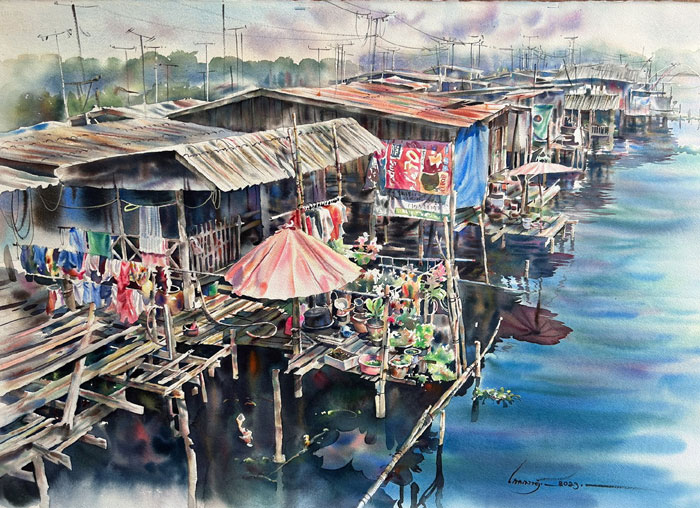
JY.
Please tell us about your inspiration for teaching art.
SS.
I was inspired by my father, who was a teacher. My father was a primary school
teacher in a rural school. Since I was little, I have seen my father teach his students,
generation after generation. I followed my father to his first assignment in Nam Yuen
District, Ubon Ratchathani Province, which is an area bordering Cambodia. We had
to fight with hardships. The school where my father was in was robbed by bandits,
who gathered them together and hit them on the head with guns. I saw the lack of
development and the people did not receive an education. Later, my father asked to
be transferred back to be a teacher at home. I saw my father's dedication and
sacrifice. He intended to teach his students to have knowledge and skills in various
subjects. Many of my father's students were successful, were civil servants, do
business, do farming, had stable careers, were able to change their lives for the
better, helped develop their villages to be more prosperous, and came back to help
build temples, build schools, etc.
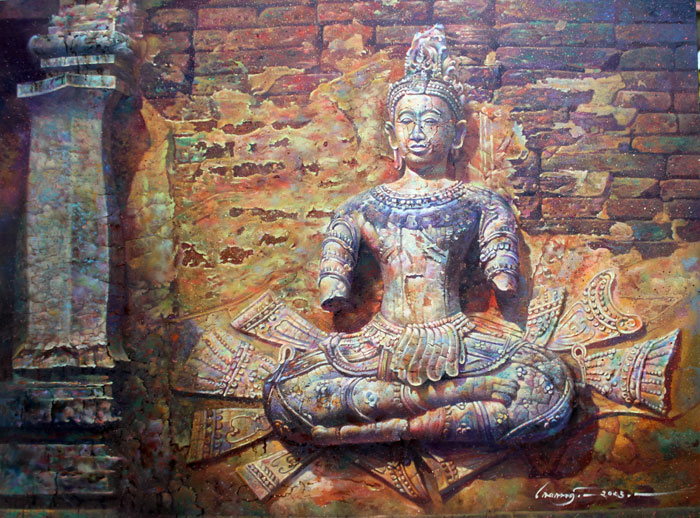
My father was therefore an inspiration and a role model in the teaching profession.
When I was in primary school, I liked drawing, and the teacher often asked me to
help draw in the classroom and draw for my seniors and friends. The teacher praised
my beautiful drawings, so my father recommended that I should continue studying
art. I enrolled in a vocational certificate program in fine arts at Ubon Ratchathani
Vocational College and continued my studies for a Bachelor of Fine Arts in
International Painting from Chulalongkorn University. In 1995, I was accepted as a
teacher in the Fine Arts Department at Chiang Mai Vocational College. Throughout
my tenure as a teacher, I have felt love and pride in using my knowledge and skills to
my advantage. I intend to continue my father’s idea that teachers are givers who will
help provide knowledge, experience, work, and life. I hope that my students will be
successful in their careers, be able to do their best, and continue their education at a
higher level. They will be the seedlings of art that grow, flourish, and have quality,
and can live beautifully and securely in society from generation to generation.
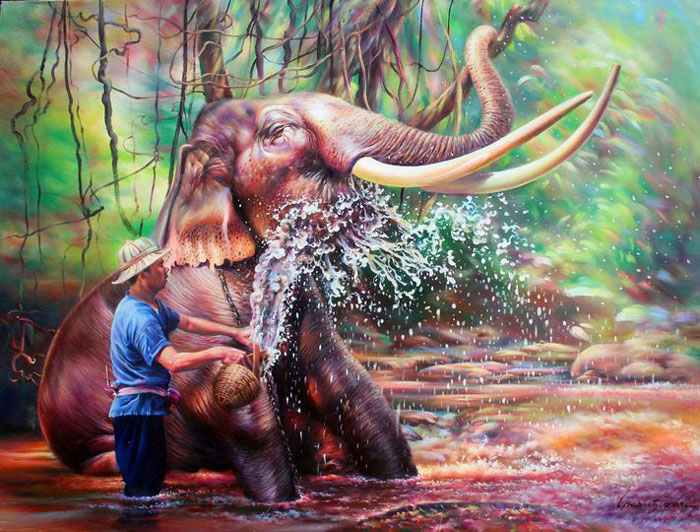
JY.
What were your reasons for choosing the difficulty of watercolors? Please
provide examples of your impressions of past works.
SS.
The starting point for choosing to use watercolor techniques is that it is a
technique that must be taught to students regularly every semester. You have to
experiment and demonstrate to students regularly. You are familiar with using
watercolors. You are impressed by the brightness, beauty, and speed of watercolors.
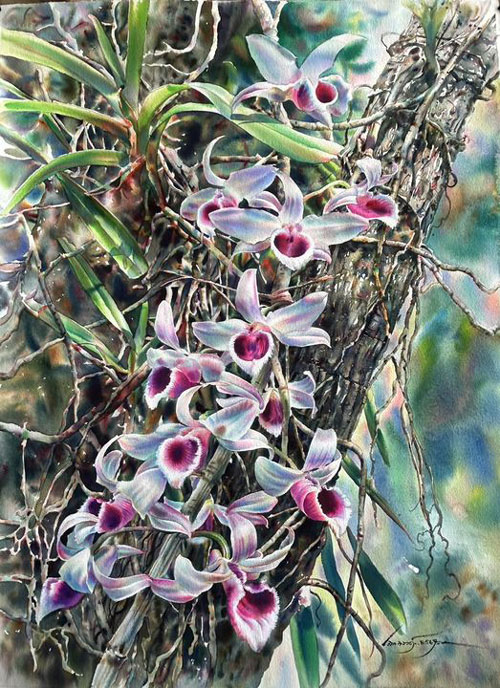
I started learning to use watercolors at the same time as the first generation of
students I taught. The colors used were student grade colors. The paper used was
100-pound paper or 300 grams. Until I had the opportunity to enter a national
competition and received an award. Since then, I have created works to enter many
competitions and received awards continuously until they are well-known by the
general public. I also got to know many artists who recommended that I try using
artist- grade colors and paper. I tried them and the colors were more beautiful and of
higher quality. It was accepted and I was invited to create works to be exhibited both
nationally and internationally continuously.
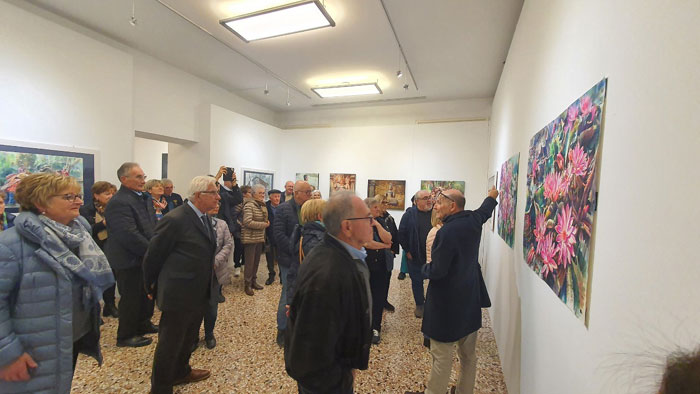
JY.
In the past, teaching and working on art, what ideas would you like to share with
our readers both in Thailand and abroad?
SS.
Throughout my life working in art most of the time, I work with two techniques
at the same time: watercolor and oil painting. However, as an art teacher whose
regular job is teaching students, I only have time to work on art during my free time
from teaching or on weekends. However, what I think is more than that is that I can
share my knowledge and experience in art with my students. I have created quality
teaching materials, used them to train students, and supported them to submit their
work to competitions, often winning regional and national awards.
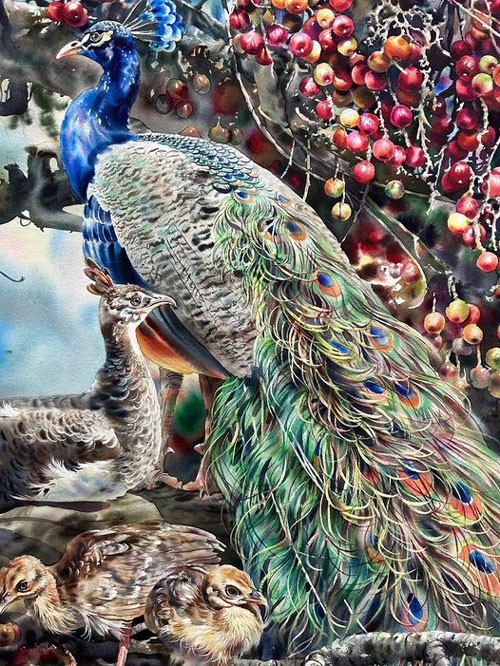
JY.
How is the use of watercolor in modern art different from its use in the past?
SS
. When comparing the creation of watercolor works in the present and the past,
there are many differences, especially in terms of the quality of materials, equipment
, such as paint, paper, and supplementary materials that are of higher quality. This
allows artists in the later era to create higher quality works, including having a
variety of examples of study work that are published through new communication
channels.
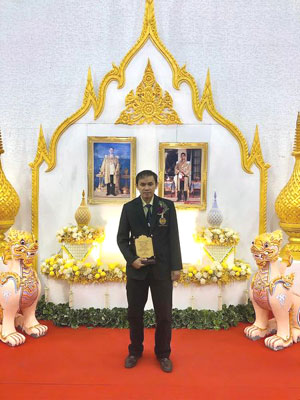
|